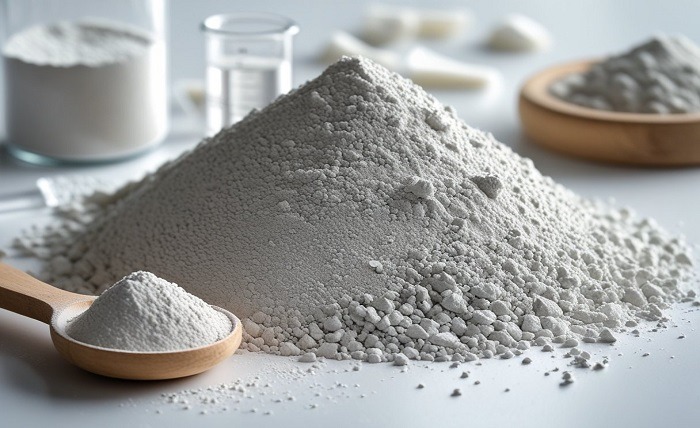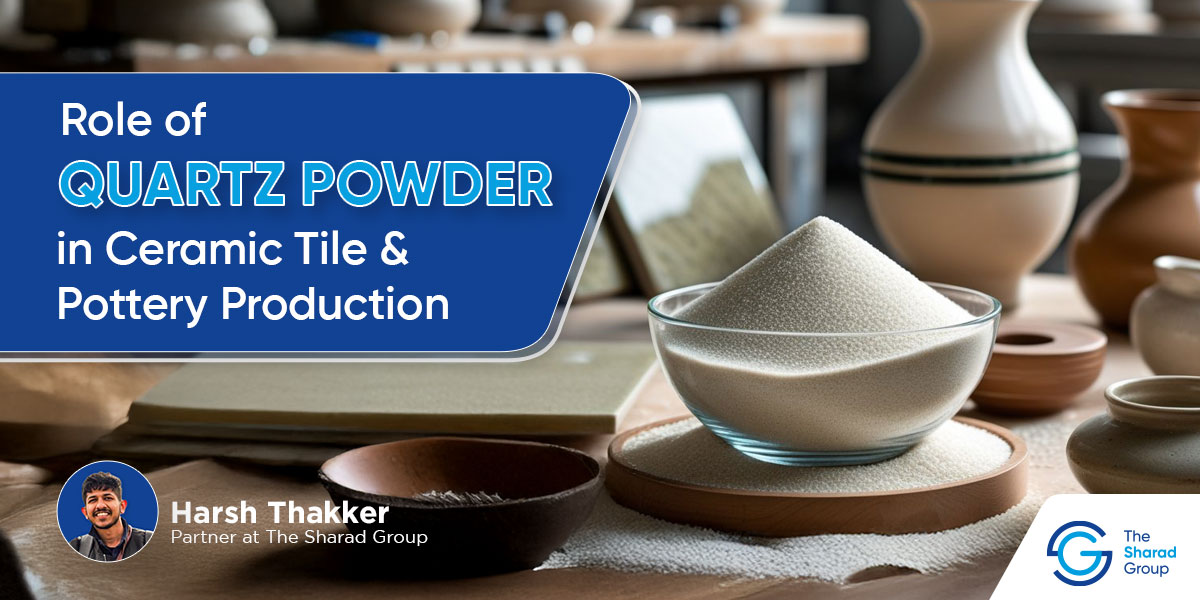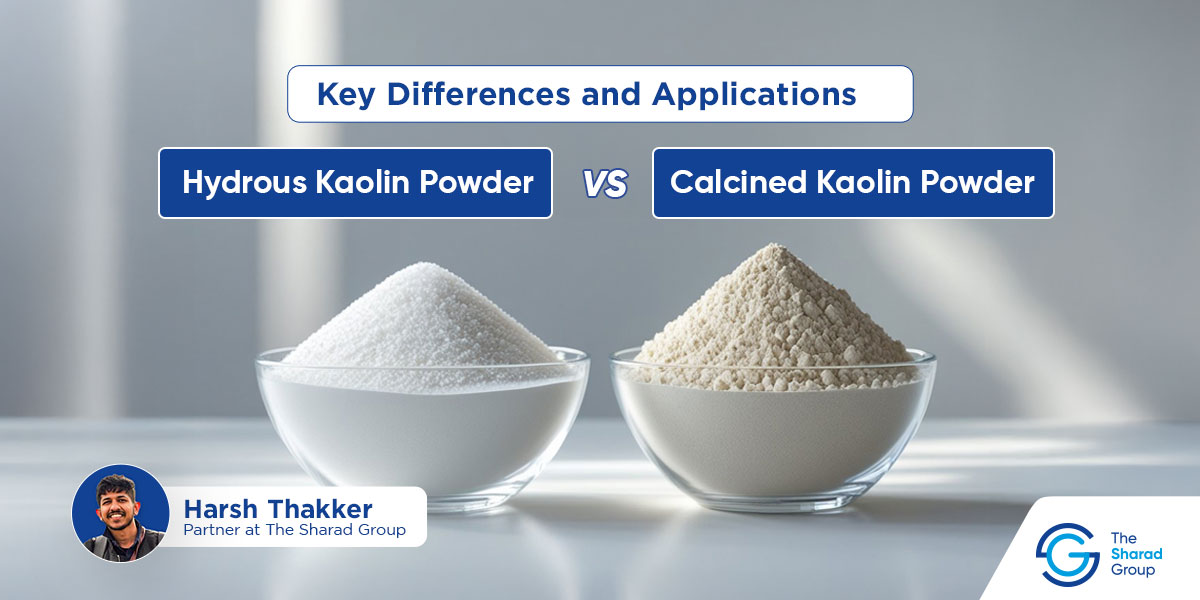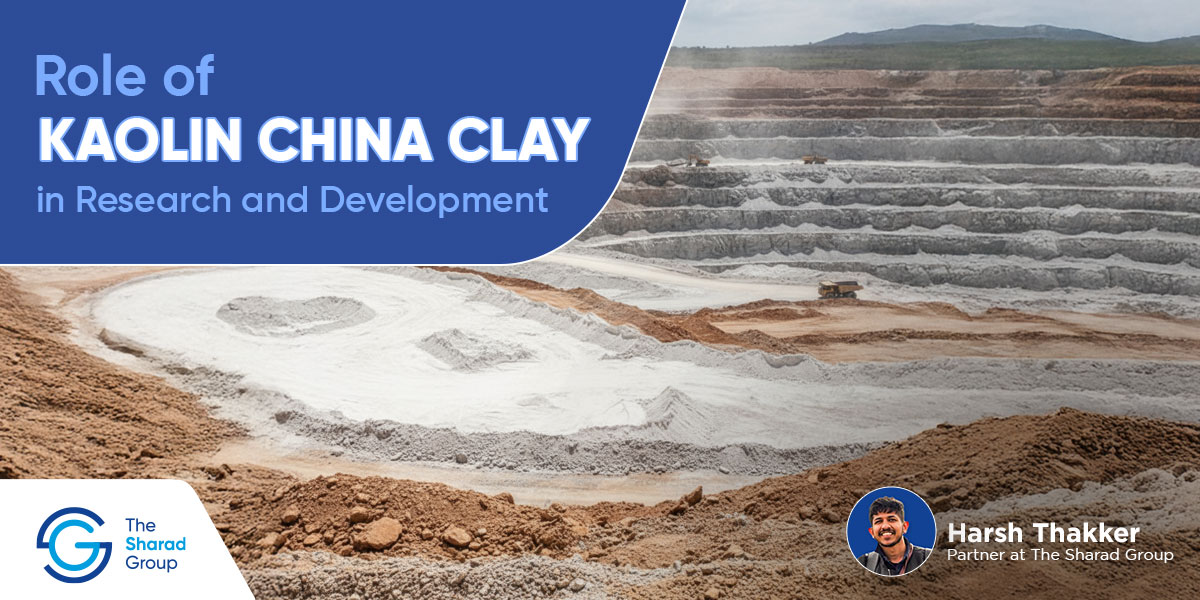If you want to use bentonite clay in your product manufacturing or industrial work, you need to be precise about the type you want to go for.
Industrialists often debate calcium bentonite vs sodium bentonite, and selecting between the two may seem challenging.
In terms of looks, both of them are similar, but they do differ when it comes to their:
- Chemical behavior
- Performance characteristics
- Industry applications
Since you are in charge of selecting a raw material like bentonite clay, you must select the best type to maximize the performance of your products or processes.
Through this blog, we will explain both types of bentonite clay and help you select the right one for your production processes.
Calcium Bentonite Vs Sodium Bentonite: Table Of Contents
- Sodium Bentonite vs. Calcium Bentonite: Quick Table of Differences
- What is Bentonite Clay?
- What are the Properties and Applications of Sodium Bentonite?
- What are the Properties and Applications of Calcium Bentonite?
- Comparative Analysis: Sodium vs. Calcium Bentonite
- How to Select the Right Bentonite for Your Application?
- TSG’s expertise in Bentonite Applications
- Sodium Bentonite vs. Calcium Bentonite: FAQs
Sodium Bentonite and Calcium Bentonite: Quick Table Of Differences
If you’re in a hurry, we have got you covered:
| Parameters | Sodium Bentonite | Calcium Bentonite |
| Primary Ion | Sodium | Calcium |
| Swelling Capacity | High | Low |
| Absorption | High | Moderate |
| Adsorption | Low | High |
| Permeability | Very Low | High |
| pH Range | 9.0-10.5 | 6.0-8.5 |
| Applications | Drilling fluids, landfill liners, waterproofing, and sealing | Detox products, personal care, animal feed, and soil conditioning |
What's on this page:
ToggleWhat Is Bentonite Clay?
Bentonite clay usually occurs from the natural erosion and decomposition of volcanic ash in seawater. It is generally soft, and when processed, it is available in lumpy or powdery form.
Its primary component is montmorillonite, but it also includes some other minerals like:
- Illite
- Kaolinite
- Cristobalite
If you closely examine the bentonite clay properties, you’ll understand why industries prefer it over all other materials and substances for their operations!
One of those properties is that, as soon as it comes in contact with water, its volume increases, becoming a thick gel-like substance.
This clay comes in two types, which are:
- Sodium Bentonite
- Calcium Bentonite
I’ll discuss both of them right next!
What Are The Properties And Applications Of Sodium Bentonite?
Sodium bentonite has a high content of sodium ions, and thus, it is best for water absorption.
These ions give it certain unique physical qualities, and because of which, industries use it in different ways.
What Are The Properties Of Sodium Bentonite?
Let’s first begin by discussing the sodium bentonite properties:
- Swelling Capacity: It can expand around 15 times its original or dry volume.
- Viscosity and Gel Formation: Adding water to sodium bentonite turns it into a thixotropic gel. Basically, it becomes a liquid when moved and thickens when at rest.
- Permeability: Post-swelling, it becomes completely impermeable, and thus, water or chemicals cannot pass through it easily.

What Are The Industrial Applications Of Sodium Bentonite?
It’s because of all these properties, sodium bentonite is used in the following ways:
- Drilling: Sodium bentonite is used to drill a borewell for any reason, including extracting oil and petroleum. It stabilizes the borewell and prevents water from getting inside it. It also helps cool and lubricate the drill.
- Foundries: You’ll also see its use as a binding agent in sand molding to manufacture iron, steel, and non-ferrous casting. Basically, it holds the shape of the mold and makes the casting accurate.
- Environmental Projects: Due to the low permeability, it is used as a liner to create a barrier that prevents the leakage of toxic pollutants into the soil.
- Construction: It is also used at construction sites to create a waterproof and durable foundation and as a barrier preventing water from seeping in.
What are the Properties And Applications of Calcium Bentonite?
Calcium bentonite is exactly the opposite of the other. Here, it contains calcium ions, and they give it a different set of properties.
What Are The Properties Of Calcium Bentonite?
Let me walk you through the properties of this clay:
- Swelling Ability: If you compare it with sodium bentonite, you’ll find that it doesn’t expand to that extent. It just swells twice or thrice its original volume.
- Adsorption Capacity: Calcium Bentonite is brilliant at adsorption. Its high cation exchange capacity (CEC) allows it to hold toxic elements and heavy impurities in one place.
- Permeable: It is more permeable compared to its sibling and can pass water and air easily.
What Are The Industrial Applications Of Calcium Bentonite?
Here are several Industrial Applications Of Calcium Bentonite:
- Beautycare: Nowadays, face mask manufacturers add calcium bentonite to their products to remove dirt and impurities from the skin.
- Detox and Wellness: Food-grade versions of this clay can flush out toxic impurities from our internal organs.
- Ceramics: Businesses from the ceramics industry use it to increase the plasticity and maintain the glaze of their product.
These diverse applications show the immense benefits of calcium bentonite, which you can experience yourself once you start using it.
Comparative Analysis: Sodium vs. Calcium Bentonite
Let me compare Sodium and Calcium Bentonite and help you understand which is the correct fit for your production or operations needs.
Swelling Capacity
- Sodium Bentonite: Swelling is the most noticeable and primary difference. Sodium bentonite absorbs water better and swells up to fifteen times. That’s why it works as an excellent sealant at construction sites or infrastructure projects.
- Calcium Bentonite: This cannot swell at the same level as sodium bentonite; there is only a slight level of swelling. Plus, it’s structurally a bit compact.
Adsorption vs. Absorption
- Sodium bentonite: It can absorb water or other fluids better and form gels or barriers.
- Calcium bentonite: It has a high CEC, effectively binding toxic impurities or heavy substances in one place. Thus, it’s a great detoxification agent.
Permeability
- Sodium Bentonite: If you are looking for a watertight seal, probably for landfills, then you must go for this clay as its permeability is on the lower side.
- Calcium Bentonite: Whereas, if you need something for filtration or removing impurities, then calcium bentonite would be the right choice due to its high permeability.
pH Levels
- Sodium Bentonite: Since its pH range is 9.0 to 10.5, it is more on the alkaline side and is best for using in specific heavy industrial and chemical processes.
- Calcium Bentonite: This clay, on the other hand, has an almost neutral pH range of around 6.0 to 8.5, so it can be used for gentle applications.
Note: pH levels matter, especially in the pharmaceutical, cosmetic, and agriculture industries, where wrong alkalinity can impact materials’ performance.
How To Select the Right Bentonite for Your Application?
You can get the right bentonite for your applications, but for that, you need to consider these few things
For Sodium Bentonite
If your requirement is all about sealing water, then you can go for sodium bentonite.
Its swelling nature and low permeability make it suitable for use in landfills, drilling, or waterproofing.
For Calcium Bentonite

If you want something that acts as a detox agent, has great adsorption and can hold substances in one place, then Calcium Bentonite is the clay you should go for.
Because of its high cation exchange capacity, it’s widely used in cosmetics, pharmaceuticals, agriculture, and animal feed.
Pro Tip: You can check out this blog, where you’ll find more details about Bentonite uses and how it can work for you! It is easy to understand and really insightful.
Get the Right Bentonite Clay at the Right Time
In short, both sodium and calcium bentonite have unique characteristics in terms of their swelling capacity, permeability, pH levels and applications.
And, to select between both, you’ll just need clarity on how each type performs in the real industrial world.
If you still find selecting the right type of bentonite clay challenging, then you may need expert guidance.
At The Sharad Group, we manufacture both types of bentonite clay, which are backed by:
- Over six decades of expertise in bentonite clay mining
- Over 50 Million Tons of Reserves
- Access to 3 international ports
- Multiple Grades
Each of our bentonite clay grades is compatible with your specific industrial application.
Plus, our team of experienced professionals is here to guide you through every step of the selection process.
Talk to our experts today to get samples or explore our full range of bentonite clay solutions.
Sodium Bentonite vs. Calcium Bentonite: FAQs
1. What is the difference between sodium bentonite and calcium bentonite?
The most notable difference between them is that:
- Sodium bentonite swells close to 15 times its size and is highly used for sealing purposes.
- Calcium bentonite doesn’t swell that much but has a higher adsorption capacity and is used for detoxification, soil improvement, and personal care applications.
2. What are the types of bentonite clay?
Bentonite clay is categorized into two types, which are:
- Sodium Bentonite
- Calcium Bentonite
3. What is sodium bentonite clay used for?
Sodium bentonite is generally used for:
- Drilling fluids
- Waterproofing
- Landfill lining,
- Making Sealants
4. What is calcium bentonite used for?
Calcium bentonite is normally used for
- Binding toxic substances
- Improving soil health
- Enhancing the texture of personal care products






